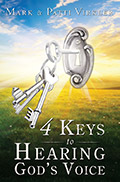Christmas Hymns
Christmas hymns date back as far as the 4th century and are religious songs based on the Psalms and religious scriptures but are sung to worship God and acknowledge the birth of Jesus. Origins of the these hymns are not always clear and to add to the complexity of identifying authors, sometimes other writers add verses to the song. The lyrics are often poems or parts of poems and it is not unusual for someone else to write the music.
O Come, O Come Emmanuel
"O Come, O Come Emmanuel" is one of the traditional hymns of the Christmas season that paints the Christmas picture. Beginning as "Veni Veni Emanuel" an unnamed monk wrote the lyrics in the 8th or 12 century and experts credit a convent of French nuns in the 15th century with supplying the music.
Father John Neale, an Anglican priest translated the Latin lyrics into English giving the joyful refrain:
Rejoice! Rejoice! Immanuel
Shall come to thee, O Israel!
It is one of the Christmas hymns that create the excitement that the Redeemer is coming and it is time to rejoice.

|
Carols for Choirs 4
(Fifty Carols for Sopranos and Altos). By David Willcocks and John Rutter (1945-). Edited by David Willcocks, John Rutter. For women's choir. ...for Choirs Collections. Christmas, Choral Collection. Choral collection. 208 pages. Published by Oxford University Press (OU.9780193535732)
|
O Come, All Ye Faithful
"O Come, All Ye Faithful" is a hymn that dates to 1751 and "Adeste Fidelis" is the Latin name as the original composition was in Latin. John Francis Wade is the accepted author as an 18th century manuscript has his signature on it. Some scholars believe the song calls to exiled Catholics to return to England. The lyrics invite all to:
O come, let us adore Him
O come, let us adore Him
O come, let us adore Him
Christ the Lord
Perhaps today the song can invite people back to Jesus.
Angels We Have Heard on High
Similar to other Christmas hymns, the origin of "Angels We Have Heard on High" is unknown, but a long time ago, shepherds in southern France use to sing to one another across the hillsides on Christmas Eve. They sang the chorus to this hymn:
Gloria, in excelsis Deo!?
Gloria, in excelsis Deo!
"Angels We Have Heard on High" was published in France in 1855 and the English translation followed seven years later. The version that is sung in the United States today was printed in 1916.
What Child is This?
William Chatteron Dix wrote, "What Child is This?" in 1865 and he chose to use the melody of "Greensleeves." It is unusual that Dix wrote this poignant song as in his lifetime, as early Christians did not celebrate or sometimes even acknowledge Christmas. The Puritans feared Christmas would become a day of pagan rituals instead of a day of remembering the birth of the Lord. Fortunately, Dix gave us this comforting yet somber song that begins:
What child is this, who, laid to rest
On Mary's lap, is sleeping?
Whom angels greet with anthems sweet,
While shepherds watch are keeping?
Editors Bramley and Stainer included the hymn in "Christmas Carols New and Old" in 1867. The use of the "Greensleeves" melody confuses the origin of the hymn because the origin of that English folk song is not known.
 look inside
look inside
|
A Ceremony of Carols op. 28
((1942, rev. 1943) SATB and Harp or Piano). By Benjamin Britten (1913-1976). For Choral, Chorus, Harp, Piano (SATB). BH Large Choral. Sacred, Christmas. 72 pages. Boosey & Hawkes #M060014116. Published by Boosey & Hawkes (HL.48008895)
|
Away in a Manger
"Away in a Manger" was first published in "The Little Children's Book for School and Families" in 1885. The author is unknown and the hymn is sung to different tunes. The concept of the Lord Jesus as a baby is so clear in the beginning of the song:
Away in a manger
No crib for His bed
The little Lord Jesus
Lay down His sweet head
The sweet, soothing hymn creates feelings of love and a connection to the baby in a bed of hay at his birth and a Gallop Poll ranks it one of the most popular Christmas hymns.
It is interesting that religious groups such as the Puritans feared that birthday of the Lord Jesus would become a day far removed from the celebration of that birth of the Lord. Today, it is the Christmas hymns that are the central feature of our holiday celebrations that brings the Christ back to Christmas and brings beauty and serenity to the season.
Return from Christmas Hymns to Christian Hymns
All christian lyrics are the
property and copyright of their owners, and
are provided here
for educational purposes only.

 (2)
(2)
 (7)
(7)










